Very interesting. I’d just gassed up the Suzuki Boulevard C50T for the first time, and when I went to reset the tripmeter it read 110.8 miles, but the odometer only read 109. This is exactly the kind of inexplicable weirdness that keeps me awake at night-like why does Hawaii have interstate highways?
Fortunately, that was the only thing on the Boulevard that made me go hmmm. Back in 2004 when Suzuki put all of its cruisers under the boulevard banner, the 805cc Volusia received fuel injection and became the Boulevard C50, for a custom with 50 cubic inches. In 2005, Suzuki added a touring version, the C50T, with a windscreen, soft saddlebags, studded seats and a backrest. Other niceties include whitewall tires and an easy-to-read white faced speedometer (that glows orange at night) with an inset bar-graph fuel gauge. Take a walk around the Boulevard and you’ll see how this 805cc midsized cruiser can be mistaken for being at least 1,000cc. The combination of black and chrome and the fully valanced fenders give the bike a classic look, even if the fenders and some of the covers are plastic.
The Boulevard C50T‘s liquid-cooled, 45-degree, SOHC V-twin engine is housed in a cradle-type tubular-steel frame. The engine rumbles to life instantly, and each time I start the bike, I can ride off almost immediately without any hesitation or grumbling from the engine. There’s good low-end torque to pull it strongly up hills, and the shaft drive’s output is as smooth as a grilled peanut butter and banana sandwich. The two-into-two exhaust sounds appropriately throaty without being loud, and Suzuki’s Dual Throttle Valve system, multihole fuel injectors and 32-bit ECU borrowed from its GSX-R models don’t produce any of that abruptness sometimes associated with motorcycle fuel injection. The C50T has the same engine as the Suzuki Boulevard M50 (tested in Rider, August 2005), which made 45.1 rear-wheel horsepower at 5,900 rpm and 44.8 lb-ft of torque at 3,400 rpm on the Borla Performance dyno.
Controls are all very user friendly and shifting through the five gears is smooth. The engine feels a bit busy for a cruiser at highway speeds, where I often found myself wishing for a sixth gear, but offset crankpins reduce vibration so only a minimum amount reaches me. I can feel some vibes coming through the footboards; it isn’t bothersome, just there, and after putting more than a thousand miles on the C50T, I hardly notice it anymore.
The C50T is set up for touring, so I spent some long days in the saddle to see how the Boulevard (and I) would hold up. One of the days was spent on the freeway, riding through the canyons, stopping for chowder along the coast, riding, stopping for more chowder at a different place, and riding some more. The 203?4-inch windscreen, as measured from right above the headlight to the top, is tall and wide and does a good job of keeping wind, bugs and road hazards off the upper body. There’s about a 3?4-inch height adjustment to play with on the windscreen, though the Allen wrench needed to adjust it is not included in the toolkit. A little windblast sneaks in underneath the windscreen and is routed up over the tank and hits my chin from below, causing some helmet buffeting.
Our 5-foot, 4-inch staffer could plant both feet flat on the ground when straddling the wide seat, which is nicely low at 27.6 inches and still feels well padded after hours on the bike. The seat also allows you to move around and choose a riding position that suits your fancy-if I sit up straight and scoot to the back, where the seat angles up, I can see over the windscreen. If I slouch in typical cruiser fashion, my elbows are in a more relaxed position and I can look either through or over the ‘screen. Footboards are positioned far enough out that my legs aren’t cramped, and they don’t get in the way when putting my feet down at stops.
The C50T carries its weight low and this 634-pound (wet) bike is easy to maneuver around town. As expected, if you crank up the pace in tight, twisty turns you’ll quickly have the footboards scraping the pavement, but Mr. T changes direction easily when the road twists and turns. On one particular canyon road with a series of very tight undulating turns, the suspension almost bottomed out, but this didn’t stop me from having a good time. The first time I leaned the C50T into a long sweeping turn at 75 mph, I could feel the bike wallowing slightly midway through the turn. I backed off the throttle a bit and the wallowing stopped, and the Boulevard stayed on course.
Out on the highway, the 41mm telescopic fork and single shock work well to provide a compliant ride. The C50T soaks up small potholes acceptably and I was never bounced out of the saddle, but the soft springs and cruiserish damping rates can cause it to pogo over large potholes and choppy pavement. The rear shock is hidden to give the bike a hardtail look and offers seven-way spring preload adjustment-we left ours in the fourth position-vital on any bike used for touring. However, to get to the shock you need to remove the left sidecover (using the ignition key) where the toolkit is housed, and remove the two bolts that hold the housing in place. Then a spanner from the toolkit is used to adjust the ramp-and-collar-type shock. For a touring bike that will be ridden two-up and solo with changing loads this seems like a lot of trouble to have to go to.
An IRC 130/90-16 front tire and 170/80-15 rear tire wrap around attractive spoke wheels. The whitewall tires look way cool, have good traction and do not follow rain grooves. And some brilliant person came up with angled valve stems that point outward, so checking tire pressure is a breeze.
Where this bike really shines is out on the open road, where you can cruise along at an unhurried pace for many miles in comfort and pack lots of stuff in the roomy saddlebags. The C50T has some of the most user-friendly saddlebags I’ve come across, with twist-lock fasteners that you can open and close with one gloved hand. Funny how these twist-locks sometimes work their way back to the open position, but the bags’ flaps keep the contents safely inside. A snap at the rear of each keeps the flaps from fluttering around, and the removable water-resistant bags hold their shape well. However, if you want to lock up the contents of the bags, you’ll have to come up with an alternative plan. A men’s size large textile jacket with armor fit into one of the bags, and I could easily drop three plastic grocery bags full of food into the other one. The classy chrome-studded pattern from the seats and backrest continue on the saddlebags. Someone should have thought to dye the faux leather black where it’s cut off at the seams because it looks unfinished.
I had a chance to try out the C50T’s passenger accommodations while helping contributor Bill Stermer with his communicator test for this month’s Buyers Guide. The passenger seat is higher than the rider’s, which had me looking over the top of Bill’s head and getting a lot of windblast on my helmet. Passengers who are shorter than the rider will be better protected from the wind. The passenger pegs are placed high, to match the seat and clear the exhaust pipes, and the saddlebags forced my feet forward so that my heels were on the pegs. The seat also tilts forward so that when Bill came to a stop I would slide into him. My thoughts are that the passenger accommodations are set up for small passengers.
The C50T could benefit from stronger brakes. The front single disc is adequate and has good feel at the lever, but the 180mm rear drum brake locks the wheel too easily and is difficult to modulate well. Stalk-mounted mirrors provide a clear rear view, the steel tank will accommodate a magnetic tankbag, and if you aren’t carrying a passenger you can strap luggage on to the passenger seat and backrest. Brackets above the passenger pegs make a great place to attach bungee hooks. There’s even a helmet lock, though it’s difficult to get to with the saddlebags installed.
With its good long-distance comfort and ergonomics, user-friendliness, decent 41.7-mpg fuel economy and roomy, snazzy saddlebags, the C50T Boulevard is a good choice for those who like relaxed cruiser touring-and it’s reasonably priced at just under eight grand. Oh, that Hawaii interstate mystery? Turns out that any highway built under the auspices of the Federal Aid Highway Act of 1956 and funded by the federal government is called an interstate, even if it doesn’t cross state lines. Still haven’t figured out that tripmeter, though.
If you’re interested in the 2007 Suzuki Boulevard C50T, you may also be interested in Rider‘s Middleweight Comparo featuring the 2008 Suzuki Boulevard C50T as well as the 2008 Honda VTX1300T, Kawasaki Vulcan 900 Classic LT and Star V Star 1100 Silverado.


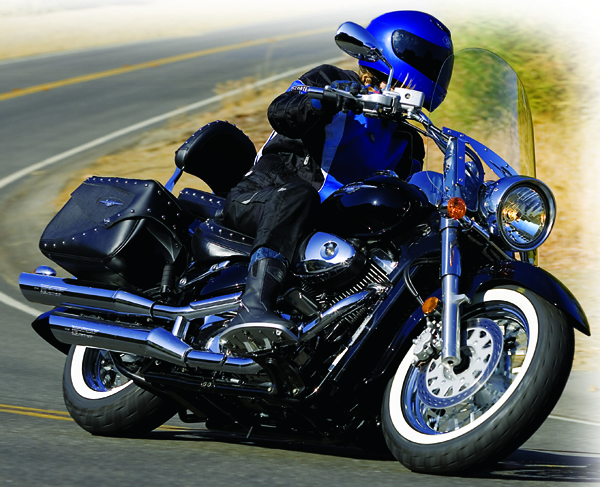
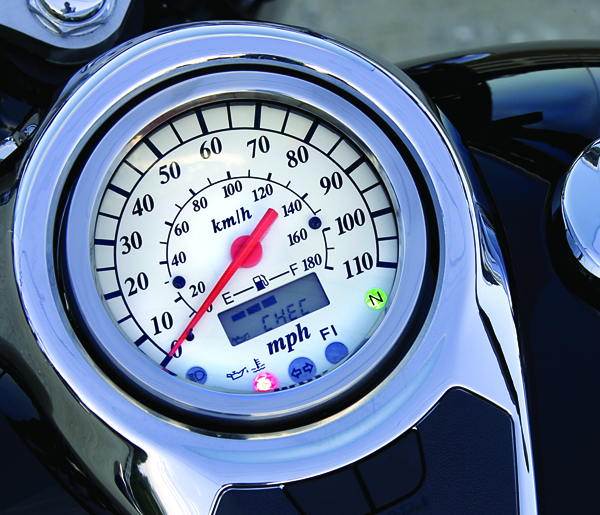
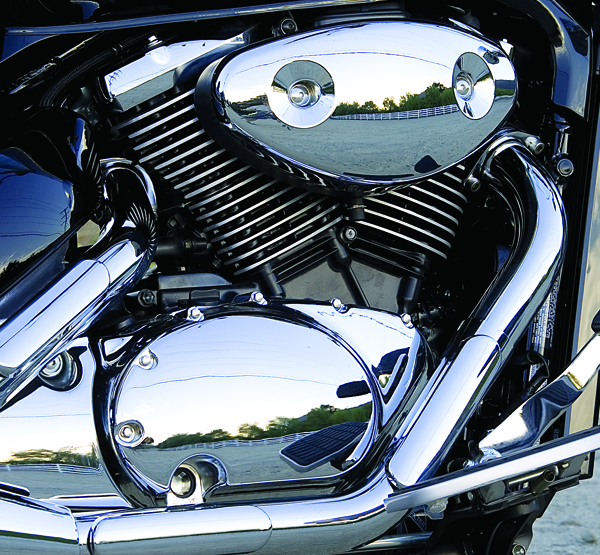
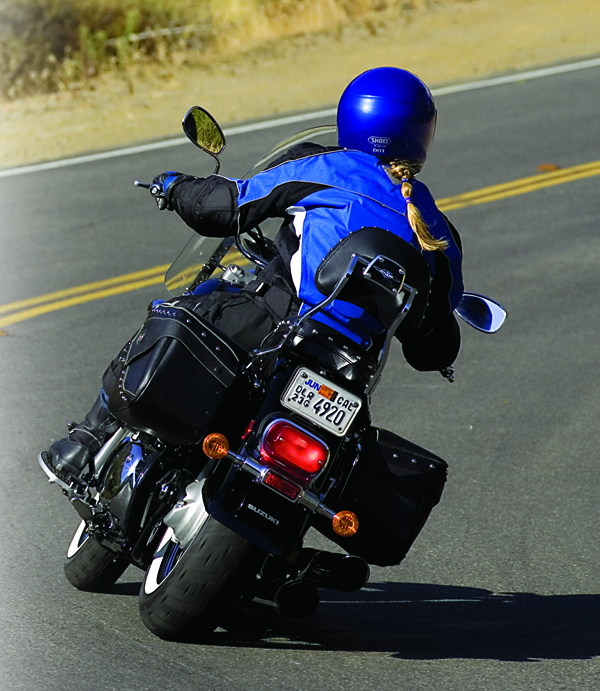
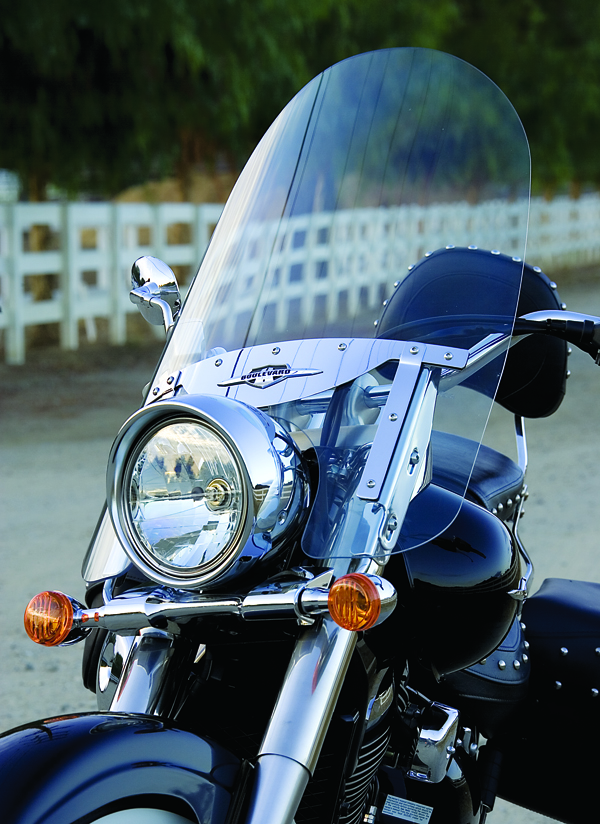
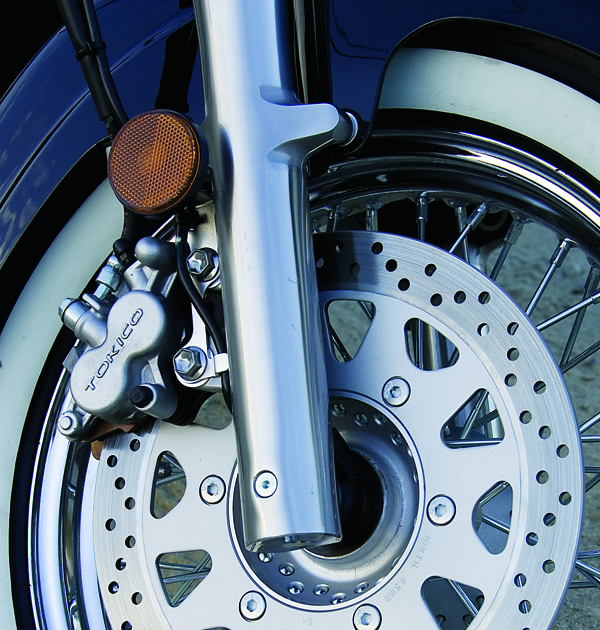








I have a 2003 800 Volusia trike and I would echo the same thoughts as above for the trike. As a trike it may be a little under powered but it’s a good touring platform. I can ride it all day one up without feeling tired. I had an 1800 Wing before the trike and the trike seems as comforable as the Wing. I’ve always liked Suzuki for their addditional attention to detail
and the C-50 should be a great machine in 2 or 3 wheels.
just purchased our second C50T, a 20O7. My better half has a 2005 both are fuel injected, which is great at start ups, the paint and chrome are outstanding. As for adjusting the rear suspension , it’s a pain in the neck as stated but does not detract from the whole package.
I’m a big guy but am very comfortable on long rides, this bike fits like a glove. I traded in an 04 Sportster which did not fit and am very happy with my Suzuki
About to exchange the wife for this c50t boulevard. Can’t wait to saddle up with Cory and Trinadad for a trip to Leavenworth,Wa. Thanx@a million for ur support r÷regarding my cancer and divorce. Safe to say…I’m outta here bitch.